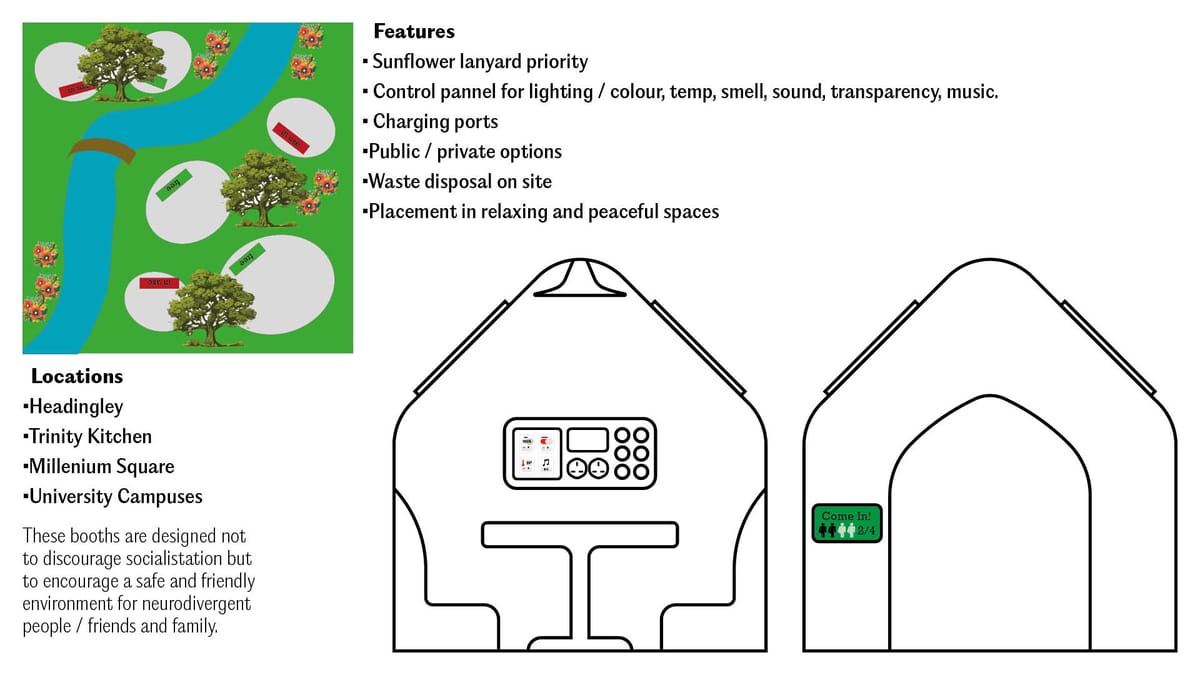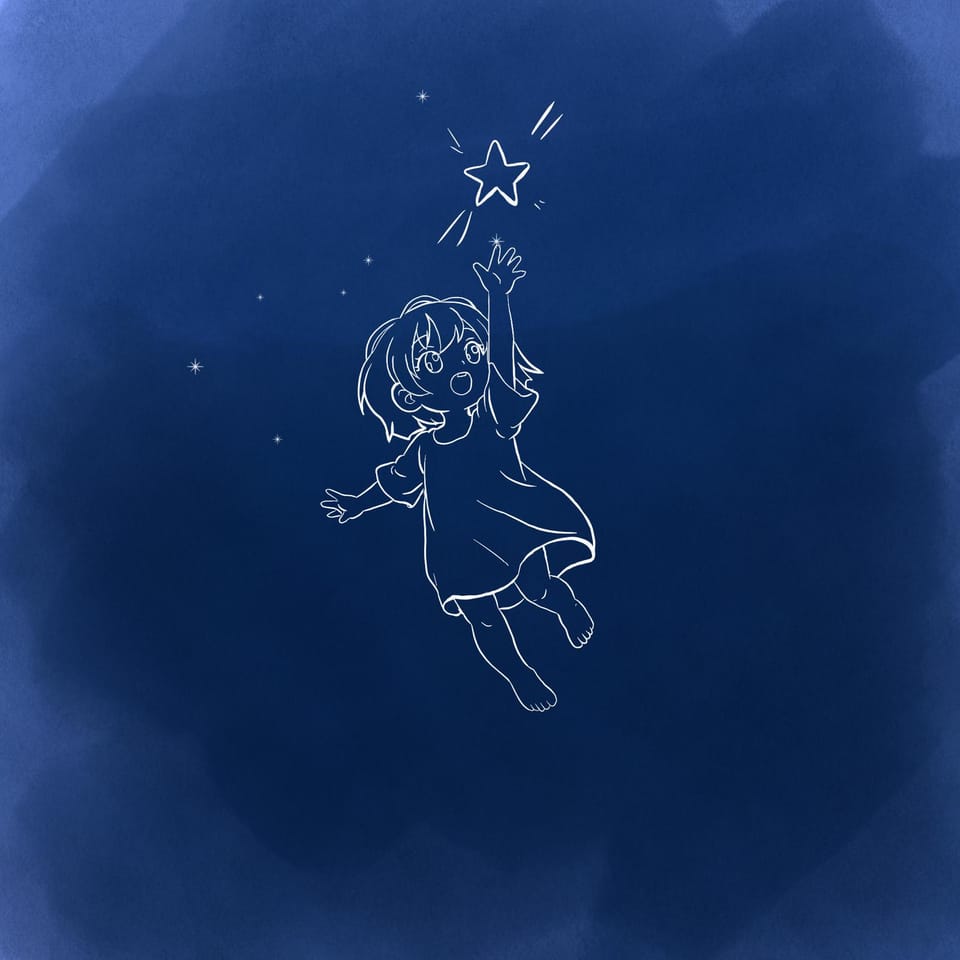5.2.1 Public Space, Public Voice

The Challenge
Create a campaign that raises awareness about neurodiversity in public spaces. Public spaces – streets, parks, transport hubs, shops, community centres – are designed for everyone, but they don’t always work for everyone. Neurodivergent people often face challenges that remain invisible to others: sensory overload from noise and lighting, anxiety in unpredictable environments, difficulties with wayfinding, or social expectations that feel impossible to navigate. Your campaign should make these challenges visible and spark conversation about how public spaces could be more inclusive.
Our Idea
Our group came up with an idea for spaces dotted around leeds which featured booths for people to sit in and socialise. The goal of these booths would be to create a comfortable space for people to go to if the city were to become overwhelming or for parents to take their childeren if they needed a minute. These booths could be particuarly helpful for people who dont like to eat in publice spaces. We included panels for controls inside the booth so it could be suited to every need and planned on incorporating them into some sort of a nice garden/secenery. Sunflower lanyards would have priority over these spaces as it would be aimed to assist neurodivergent people but not be exclusive too.


Reflection
Technologies considered - We considered creating a group chat on whatsapp for this project to allow us to communicate easily with one another, However this didn't happen as it was unnecessary for a lunchtime project and would be better suited for a bigger timeline. We also considered using AI search engines to back up ideas and see if they would be suitable but it never ended up being needed for our chosen idea.
Technologies used - Pen and paper (notes and sketches), Laptops (using softwares) Adobe Illustrator + InDesign (creating illustrations and visualisation for idea), Sharepoint (sharing files), Google and DuckDuckGo (search engines), Squashies (early planning and mapping of ideas), Phone camera ('making of’ photos).
Process - Our group began by spitballing ideas while using squashies to paint a picture to others, we then began to note down significant ideas to pick from. We decided on our chosen idea of the booths, then began to create visualisations and descriptions for our InDesign page. This was all then placed together at the end to portray our final idea. Our decision was influenced by our own experiences when eating in public. Our thinking was guided by trying to solve an issue for autistic people more so than raising awareness which is apparent in our outcome and something Graham pointed out. Our group worked well together and things did feel natural with everyone's roles falling into place nicely. It was a great dynamic. Something i'd do differently next time would be summing up our idea better in the bullet points and writing.

